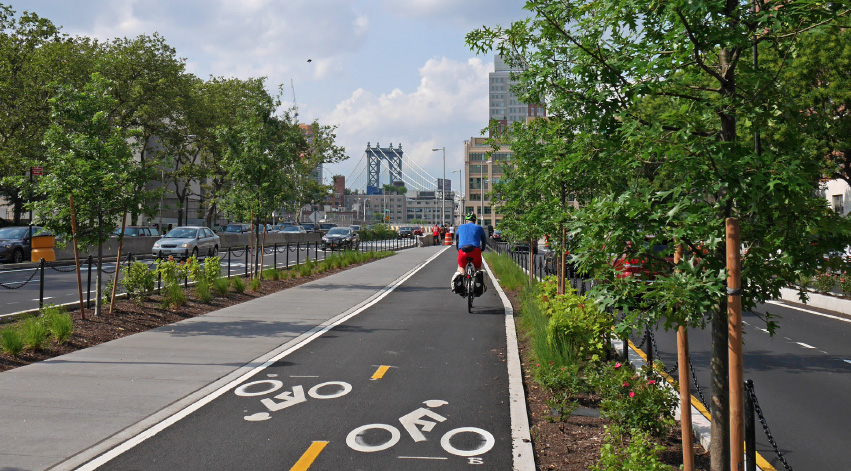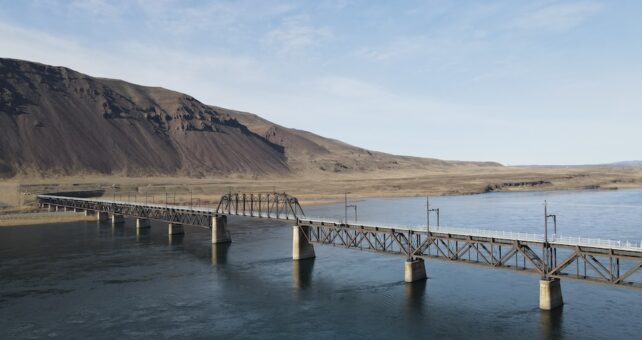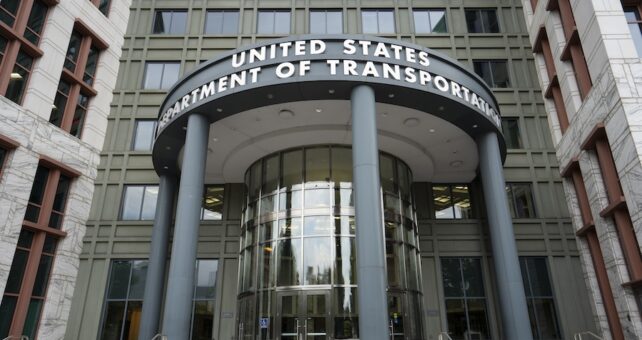Transportation Alternatives Spending Report Fiscal Years 1992–2021

EXECUTIVE SUMMARY

The Transportation Alternatives Set-Aside (TASA) is the largest dedicated source of funding for trails, walking and biking in the United States. Since 1991, this program, formerly known as Transportation Enhancements (TE), has transformed the landscape of the country. Under the program, states have been able to make critical investments in building safe places to walk and bike. In part due to this dedicated funding, the United States now boasts more than 40,000 miles of multiuse trails, with communities reaping the long-known benefits. Trail networks connect people to each other, create economic vitality and promote healthy outdoor mobility—saving money and decreasing roadway congestion while reducing pollution and health care costs.1
Since the inception of dedicated Transportation Alternative (TA) programs, Rails-to-Trails Conservancy (RTC) has monitored how these funds have been invested and the projects that have been built. This annual Transportation Alternatives Spending Report is an important tool for advocates, states and the active transportation movement at large to understand and strengthen the program, thus improving the efficiency and impact of the investments made.
The 2020 report found that 95% of TASA funds obligated to projects in the last seven years were used to fund trails, walking and biking. However, the national pipeline of potential projects needed to create connected active-transportation networks far exceeds the current level of funding and rate of obligation.
- A total of $459 million was obligated to TA projects in fiscal year (FY) 2021, in contrast to $4.4 billion in TA application requests in FY 2020.
- Approximately 16% of the total FY 2021 TA apportionment, or $126 million, was lost through transfers, largely to the Surface Transportation Program/Surface Transportation Block Grant program (STP/STBG), a trend that began under the Moving Ahead for Progress in the 21st Century Act (MAP-21) and continued under the Fixing America’s Surface Transportation (FAST) Act.
- Obligation rates decreased to 60% of apportioned funds, or $459 million, down from $546 million the prior year.
- Approximately 78% ($599 million) of TE/TA/TASA funds was reimbursed, marking the completion of projects and return of up-front funds to local pockets.
CONCLUSION
In the 30 years since the landmark Intermodal Surface Transportation Efficiency Act (ISTEA) legislation ushered in a multimodal approach to federal transportation funding, states have, over time, increasingly separated out into two distinct groups: 1) states with a long-standing commitment to Transportation Enhancements (TE), Transportation Alternatives Program (TAP) and now Transportation Alternatives Set-Aside (TASA) projects; and 2) states that are divesting from the program through transfers, inactivity or allowing funds to lapse. An examination of the programmed spending performance of individual states indicates that many states continue to exhibit a commitment to use these funds to expand travel choice, strengthen the local economy, enhance quality of life and protect the environment.
Obligations
In fiscal year (FY) 2021, the combined obligation rate for TE, TAP and TASA was 60%, a decrease from 103.7% in FY 2019 as states no longer faced increased pressure to obligate funds to avoid rescissions. However, states must continue to actively obligate funds at a higher rate to spend down the high available balances and meet the growing demand for safe places to walk and bike, particularly considering the 70% average increase to TA under the Bipartisan Infrastructure Law (BIL).
Transfers, Lapsing and Rescissions
Under the Fixing America’s Surface Transportation (FAST) Act, states could continue to transfer up to half of all Transportation Alternatives (TA) funds out of the program, as originated in the Moving Ahead for Progress in the 21st Century Act (MAP-21). This legislative loophole has led to a significant rise in the number of inter-program transfers, and many states are taking advantage of these policy changes to disinvest from the program. While some states have spent transferred funds on TA-eligible projects, many more do not track the final project designation, or they use funds for road construction. Nevertheless, the fact that $1.6 billion has been transferred since 2012 is staggering and reflects the prioritization of roadway projects over walking and biking infrastructure, though these TA eligibilities have a stronger return on investment.
In 2021, $118 million was transferred as part of the inter-program transfers, while only $7.7 million was due to inter-agency transfers that ultimately build TA-eligible projects. Going forward, states will have a more difficult time transferring funds due to provisions in the BIL that require a competitive process and Federal Highway Administration (FHWA) approval prior to moving TA funds into other programs.
Over the last four years, 12 states have lapsed $46 million in TAP funding that cannot be regained. States could simply obligate funds to prevent lapsing from occurring—the $46 million in TAP funding that has lapsed reflects neglect on the
part of state departments of transportation (DOTs). States must regularly obligate funds and act proactively to avoid lapsing funds.
While no rescissions have taken place since 2017, rescission rates per state can be considered a reflection of a state’s historically low obligation rates leading to a buildup of unobligated funds over many years—a buildup too high to fully obligate, leading to more funds being lost via a higher rescission. Disappointingly, states did not take advantage of the FAST Act’s repealed rescissions to continue diligently obligating funds to ensure they are used for the intended purpose. Retaining high unobligated balances could lead to funding vulnerabilities in future years.
Taken together, inter-program transfers, lapsing and rescissions represent a collective “leaky bucket” exacerbated by MAP-21 and continued in the FAST Act, providing holes through which TE/TAP/TASA funds can be lost or used for non-eligible projects (e.g., building highways).
While policy changes in the BIL worked to eliminate some of these holes in the bucket, it is up to states to ensure that funds do not lapse and are used as intended—to advance active transportation, improve quality of life and protect the environment.
Looking Ahead
Since 1992, TA, formerly known as TE, has provided more than $16.4 billion in project awards to support the development and implementation of thousands of trail and active transportation projects in hundreds of communities. Despite the positive impact of TA and a 70% funding increase in recent legislation, the amount of funds available is not nearly enough to satisfy the demand across the United States, and many TA projects go unfunded each year.
Throughout the initial five-year duration of the FAST Act from FYs 2016 to 2020, demand for TA funds grew 124%.8 However, the amount of funds awarded and available during this same period remained well below the demand. Only 24% of the $15.5 billion requested by communities was funded over the initial five years of the FAST Act, leaving nearly $11.7 billion (76%) in TA-eligible project requests unfunded.
In the fall of 2021, the Infrastructure Investment and Jobs Act, also known as the BIL, was passed. The bill replaced the FAST Act and reauthorized existing surface transportation programs, including TA, which received a 70% average increase over the next five years, providing states with a new opportunity to address some of this unprecedented demand.
States are more likely to benefit from this increase when they have a pipeline of projects to be funded. Michigan and other states have been able to prepare projects for TA grant funding several years in advance, long before the funding is available to be obligated. Having projects in the pipeline increases the speed at which a state can obligate funds, particularly when program changes result in more available funding.
Alongside the 70% average increase in funds, the BIL allows states to use up to 5% of funds for the creation and implementation of TA technical assistance programs, which may help communities with the greatest needs and limited capacity to effectively access TA funds. The BIL also increases the share of funds suballocated to substate areas based on population from 50% to 59%. In addition, greater flexibility for matching funds may allow states to average the match rate across all projects rather than applying the same match rate across a state. Finally, the latest iteration of TA makes it more difficult to transfer funds away from the program, instead channeling money toward its intended purpose.
Since the inception of dedicated TE/TA programs, states have been able to make smart investments in trails, walking and biking with strong, proven returns, creating jobs and improving access to recreation and active transportation opportunities. This new guidance marks a significant shift in the program, and the continuation of TA under the BIL has the potential to increase access to safe and convenient walking and biking facilities across the country. States must now renew their commitment to TA, work toward meeting the demand for funds, and ensure that many more places have the tools they need to complete plans for connected active-transportation systems through concentrated and strategic funding to realize the full potential of their TA investments.

About TrADE
The Transportation Alternatives Data Exchange (TrADE) is operated by Rails-to-Trails Conservancy. TrADE helps stakeholders at the federal, state and local levels understand and make effective use of the Transportation Alternatives Set-Aside (TASA) program. TASA provides funding from the federal government for projects that expand travel choice, strengthen the local economy, improve quality of life and protect the environment. Eligible projects include most activities historically funded as “Transportation Enhancements,” the Recreational Trails Program and the Safe Routes to School program. TrADE provides transparency, promotes best practices, and provides citizens, professionals and policymakers with information and access to funding data.
From 1996 to 2013, TrADE operated as the National Transportation Enhancements Clearinghouse, as a partnership between Rails-to-Trails Conservancy and the Federal Highway Administration (FHWA).
For more information, visit trade.railstotrails.org.
Acknowledgments
This report was written and produced by Mary Ellen Koontz and Torsha Bhattacharya, reviewed by Kevin Mills, edited by Amy Kapp and Sharon Congdon and designed by Joe LaCroix. Data collection and table and figure production were undertaken by Tif Mulally, Ph.D. The report was produced for TrADE at Rails-to-Trails Conservancy.
Data for this report come from FHWA’s Financial Management Information System (FMIS) and from state department of transportation (DOT) staff. This report utilizes early data from FMIS and may differ slightly from final federal reports. This publication would not be possible without the contributions of staff from state DOTs. Their voluntary participation has been essential to the success of the data exchange in creating openness and transparency and promoting best practices.

Donate
Everyone deserves access to safe ways to walk, bike, and be active outdoors.

